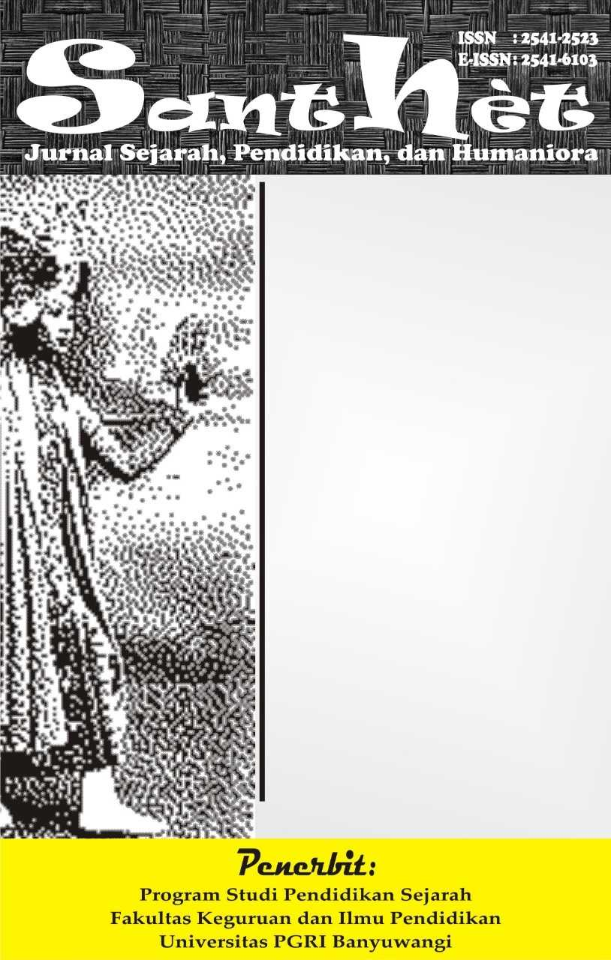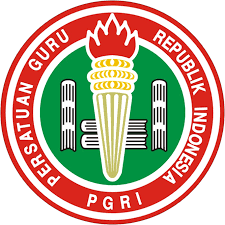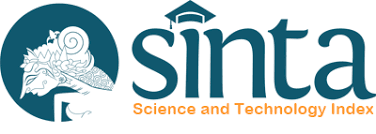ANALYSIS ON THE TRANSLATION STRATEGIES OF POPULAR DISNEY SONG LYRICS
Analisis Strategi Penerjemahan Lirik Lagu-Lagu Populer Disney
DOI:
https://doi.org/10.36526/santhet.v9i4.5659Keywords:
Translation Strategies, Song Lyrics, Disney, Franzon, Audiovisual TranslationAbstract
This study examines translation strategies used in the Indonesian versions of ten popular Disney songs, in response to the growing importance of culturally resonant translations in global media. With over 2.5 million Disney+ Hotstar users in Indonesia, localized song lyrics play a key role in enhancing audience engagement. Using a descriptive qualitative method and documentation analysis, this research analyzes English and Indonesian lyrics of songs such as Let It Go, A Whole New World, and Beauty and the Beast. Findings show paraphrasing as the most frequently used strategy (165 instances), followed by adaptation and substitution (59 each), omission (25), and addition (2). These results highlight how translators prioritize meaning and musicality in Indonesian renditions. The study concludes that song translation requires balancing semantic accuracy, rhythm, and cultural context. The findings contribute to a deeper understanding of audiovisual translation in multilingual and multicultural contexts. Future work may explore similar strategies across other languages and media platforms.
References
Amelia, D. (2021). Translating Disney song lyrics: A study of translation strategies. J-ELLiT (Journal of English Language, Literature, and Teaching), 5(2), 115-125.
Cho, W., Kim, Y., Lee, S., & Yu, Y. (2025). MAVL: A Multilingual Audio‑Video Lyrics dataset for animated song translation. arXiv.
https://arxiv.org/abs/2505.18614
Creswell, J. W. (2014). Research design: Qualitative, quantitative, and mixed methods approaches (4th ed.). Sage Publications.
Cruz‑Durán, B. (2023). Song translation in the audiovisual context: To train or not to train? Realia Archives, 27(2), 73–88. https://doi.org/10.7203/realia.27.20634
Franzon, J. (2008). Choices in song translation: Singability in print, subtitles and sung performance. The Translator, 14(2), 373–399. https://doi.org/10.1080/13556509.2008.10799269
Larson, M. L. (1998). Meaning-based translation: A guide to cross-language equivalence (2nd ed.). University Press of America.
Li, C., Fan, K., Bu, J., Chen, B., Huang, Z., & Yu, Z. (2023). Translate the beauty in songs: Jointly learning to align melody and translate lyrics. arXiv. https://arxiv.org/abs/2303.15705
Low, P. (2013). When Songs Cross Language Borders. The Translator, 19(2), 147–168.
https://doi.org/10.1080/13556509.2013.10799543
Mogi, D., Herawati, S., & Putra, R. M. (2023). Translation strategies in the Indonesian version of Moana movie’s songs. Journal of Language and Literature, 11(1), 45–56.
Moleong, L. J. (2017). Metodologi penelitian kualitatif (Edisi Revisi). Remaja Rosdakarya.
Miles, M. B., & Huberman, A. M. (1994). Qualitative data analysis: An expanded sourcebook (2nd ed.). Sage Publications.
Newmark, P. (1988). A textbook of translation. Prentice Hall.
Nida, E. A., & Taber, C. R. (2003). The theory and practice of translation. Brill.
Salsabila, F. R., & Mustofa, A. (2024). An analysis of translation strategies of song lyrics in Disney’s Frozen II. Journal of English Language and Literature, 9(1), 1–15.
Seran, A. I., & Subiyanto, A. (2023). The study of subtitling strategy in “All Too Well” song translation. WEJ: Working with English Journal, 7(1), 111–127. https://doi.org/10.31943/wej.v7i1.211
Tekin, B. M. (2022). A case study on the translation strategies in Walt Disney animated musical movies’ songs: From past to present. Ankara Üniversitesi DTCF Dergisi, 62(2), 1014–1033.
https://doi.org/10.33171/dtcfjournal.2022.62.2.7
Andika, F. (2022). Analisis Strategi Penerjemahan Lirik Lagu pada Album “Sour” oleh Olivia Rodrigo.
Denzin, N. K., & Lincoln, Y. S. (Eds.). (2018). The SAGE handbook of qualitative research (5th ed.). Sage Publications.
Kaindl, K. (2005). Multimodality in the translation of musical-verbal works. The case of the Disney songs. In E. Ventola, C. Charles, & M. Kaltenbacher (Eds.), Perspectives on Multimodality (pp. 195-214). John Benjamins.
Media Partners Asia. (2021). Southeast Asia Online Video Consumer Insights & Analytics.
Munday, J. (2016). Introducing translation studies: Theories and applications (4th ed.). Routledge.
Naimushin, B. (2021). The “mokusatsu” story: A persistent translation myth. Russian Journal of Linguistics, 25(2), 477–496.
Patton, M. Q. (2015). Qualitative research & evaluation methods: Integrating theory and practice (4th ed.). Sage Publications.
Putri, D. A., & Ayuningsih, D. (2021). An Analysis of Modulation as a Translation Strategy in the Subtitle of the Onward Movie. Proceedings of the 3rd International Conference on Language, Literature, and Education (ICOLLE).
Rahardjo, S. (1990). Pendidikan seni musik. Departemen Pendidikan dan Kebudayaan.
Redita, D. N. (2020). Translation Strategies of English Idiomatic Expressions in the ‘Aladdin’ Movie. Journal of English Language Teaching and Linguistics, 5(3), 365-377.
Rosenbluh, E. S. (1968). Mokusatsu: A problem in reporting. Journal of the American Forensic Association, 5(3), 85-88.
Sarajeva, L. (2008). Song translation as a creative process. In V. Kavalir & B. Kennedy (Eds.), Challenges of Translation (pp. 123-135). Vilnius University Press.
Silverman, D. (2020). Interpreting qualitative data (6th ed.). Sage Publications.
The Walt Disney Company. (2021). Our History. The Walt Disney Company.
Venuti, L. (Ed.). (2012). The translation studies reader (3rd ed.). Routledge.





























